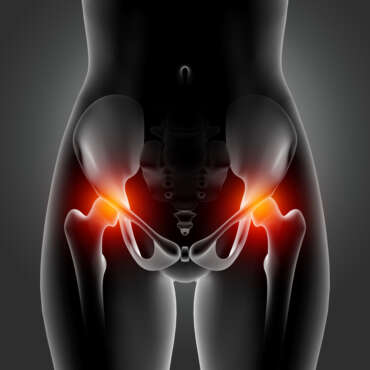
Pelvic pain is a common concern that affects people of all ages, particularly women. Despite its prevalence, there’s a lot of misinformation surrounding pelvic pain — from what’s “normal” to when you should seek help. Understanding pelvic pain myths and facts can empower you to take charge of your health and ensure you get timely care when needed.
Common Pelvic Pain Myths and the Truth Behind Them
Myth 1: Pelvic Pain During Menstruation is Always Normal
Many believe that cramps and discomfort during periods are something everyone must endure. While mild cramps can be common, severe or worsening pain may signal conditions like endometriosis, adenomyosis, or pelvic inflammatory disease.
Fact: Severe menstrual pain is not something you just “have to live with.” If pain interferes with daily activities, it’s worth consulting a healthcare provider.
Myth 2: Pelvic Pain Only Happens to Women
Pelvic pain isn’t exclusive to women. Men can also experience pelvic pain due to conditions like prostate issues, urinary tract infections, or hernias.
Fact: Both men and women can experience pelvic pain, and the causes can be diverse. Don’t ignore persistent discomfort, regardless of gender.
Myth 3: Pain is Always Gynecological in Origin
Pelvic pain is often automatically associated with reproductive organs, but it can also stem from the digestive system, urinary tract, muscles, or nerves. Conditions such as irritable bowel syndrome (IBS), interstitial cystitis, or hernias can mimic gynecological pain.
Fact: Accurate diagnosis requires careful evaluation since pelvic pain can have multiple causes.
Myth 4: Pain Will Go Away on Its Own
Some people assume that pelvic pain is temporary and will resolve without intervention. While mild, occasional discomfort may improve with rest or lifestyle adjustments, persistent or worsening pain rarely resolves without medical attention.
Fact: Persistent pelvic pain should not be ignored. Early diagnosis can prevent complications and improve quality of life.
Myth 5: Surgery is the Only Solution
Another common misconception is that pelvic pain, especially chronic pain, always requires surgery. In reality, many pelvic conditions respond well to medications, physical therapy, hormonal treatment, or minimally invasive procedures.
Fact: Treatment should be individualized. Surgery is only recommended when non-invasive options are insufficient or the condition is severe.

Signs That Indicate You Should Seek Medical Attention
Knowing when to seek medical care is crucial. Some warning signs include:
> Persistent or severe pain that disrupts daily life
> Pain accompanied by fever, nausea, or vomiting
> Unexplained bleeding or changes in menstrual patterns
> Pain during urination or bowel movements
> Pain after an injury or accident
> Pain during sexual intercourse that is new or worsening
If you experience any of these symptoms, it’s important to consult a gynecologist or healthcare professional promptly. Early evaluation often leads to better outcomes.
How Healthcare Professionals Diagnose Pelvic Pain
Diagnosing pelvic pain involves a detailed medical history, physical examination, and sometimes imaging or laboratory tests. Depending on your symptoms, a doctor may recommend:
> Ultrasound or MRI to examine pelvic organs
> Blood or urine tests to check for infections or inflammation
> Laparoscopy for conditions like endometriosis
> Physical therapy evaluation for musculoskeletal issues
Accurate diagnosis helps tailor the treatment plan, which may include medications, lifestyle changes, physical therapy, or minimally invasive procedures.
Tips for Managing Pelvic Pain
Even before visiting a doctor, some strategies may help alleviate discomfort:
> Track your symptoms: Keep a diary of pain intensity, timing, and triggers.
> Over-the-counter pain relief: NSAIDs may help with menstrual or mild inflammatory pain.
> Heat therapy: Heating pads or warm baths can ease muscle tension.
> Lifestyle modifications: Regular exercise, a balanced diet, and stress management may reduce pain episodes.
> Pelvic floor exercises: Strengthening pelvic muscles can help in some chronic pain conditions.
However, these are supportive measures and not a substitute for professional evaluation if pain persists.
Conclusion
Pelvic pain is a symptom, not a diagnosis, and it’s surrounded by many myths that can prevent people from seeking care. Understanding the pelvic pain myths and facts empowers you to recognize abnormal pain and take timely action. Never ignore persistent or severe pain — early consultation with a healthcare professional can significantly improve outcomes and quality of life.
Remember: Your pain is valid. Seeking help is the first step toward relief.

